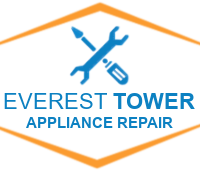
In the realm of modern living, household appliances have become indispensable companions, simplifying daily chores and enhancing convenience. Yet, like any technology, these devices are prone to wear and tear, occasionally demanding expert intervention for repairs. As consumers, ensuring the reliability and safety of appliance repair services is paramount. This leads us to the critical consideration of standards governing the repair of household appliances.
Understanding Appliance Repair Standards
What are Standards?
Standards are established guidelines that outline the necessary criteria, methods, and practices to ensure a product or service meets specific quality, safety, and performance benchmarks. In the context of appliance repairs, these standards serve as a compass, guiding technicians and repair service providers toward delivering consistent, safe, and effective solutions.
The Importance of Standards in Appliance Repair
- Safety: Paramount to any repair process is ensuring the safety of both the technician and the consumer. Adhering to set standards minimizes potential risks associated with electrical, mechanical, or chemical components within household appliances.
- Quality Assurance: Standards uphold a certain level of quality in repairs. From diagnosing the issue accurately to using appropriate tools and parts, adherence to standards ensures a thorough and lasting fix.
- Reliability and Longevity: A repair conducted following established standards is more likely to enhance the appliance’s longevity, reducing the likelihood of recurring issues and providing consumers with a reliable, functional device.
Key Standards in Appliance Repair
Certifications and Training
Technicians should possess relevant certifications and undergo continual training to stay abreast of evolving technologies. Certifications from recognized organizations validate a technician’s competence in handling various appliances and repair techniques.
Diagnostic Procedures
Accurate diagnosis is the cornerstone of effective repairs. Standards necessitate systematic and comprehensive diagnostic procedures to identify the root cause of appliance malfunctions, preventing misdiagnoses that might lead to unnecessary expenses or incomplete repairs.
Use of Genuine Parts
Utilizing manufacturer-approved or genuine parts during repairs is a critical standard. Substituting with inferior or incompatible parts might compromise the appliance’s functionality, safety, and warranty.
Safety Protocols
Adherence to safety protocols during repairs cannot be overstated. It involves proper handling of electrical components, adherence to safety codes, and implementing measures to prevent accidents or damage during the repair process.
Ethical Business Practices
Standards encompass ethical considerations such as transparency in pricing, warranty information, and honest communication with customers regarding the repair process, timelines, and potential outcomes.
Challenges in Implementing Standards
While standards are pivotal for ensuring quality repairs, several challenges persist in their consistent application within the appliance repair industry:
- Rapid Technological Advancements: Constant advancements in appliance technology necessitate ongoing updates to repair standards, posing a challenge in keeping technicians abreast of the latest repair methodologies.
- Access to Genuine Parts: Availability of genuine manufacturer-approved parts might be limited, leading to potential compromises in repair quality.
- Regulatory Variations: Different regions might have varying regulations and standards, making it challenging for repair service providers to comply with a unified set of guidelines.
Conclusion
Standards in repairing household appliances serve as a guiding framework, ensuring safety, quality, and reliability in the repair process. Consumers seeking repair services should prioritize technicians and companies that adhere to these standards, thereby safeguarding their appliances and guaranteeing peace of mind.
As technology evolves, a collaborative effort among industry stakeholders, including manufacturers, regulatory bodies, and repair service providers, is imperative to continually refine and adapt these standards. This concerted effort ensures that repair practices align with the dynamic landscape of household appliance technology, providing consumers with efficient, safe, and enduring repair solutions for their valued devices.
